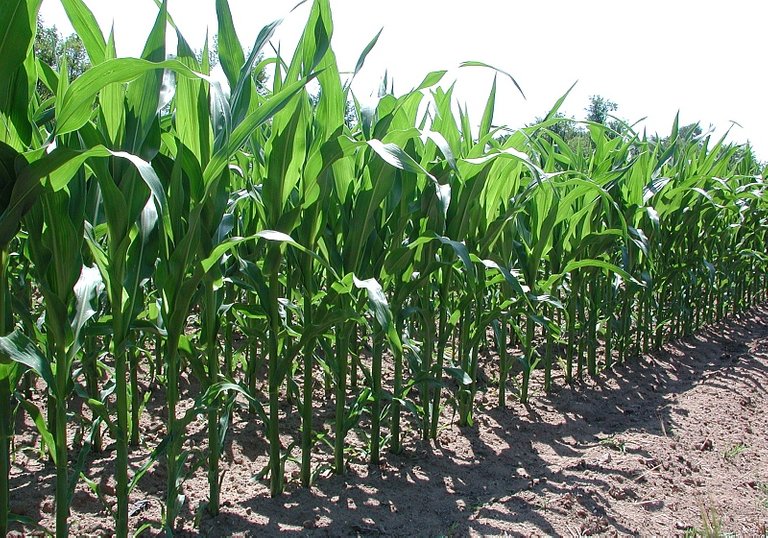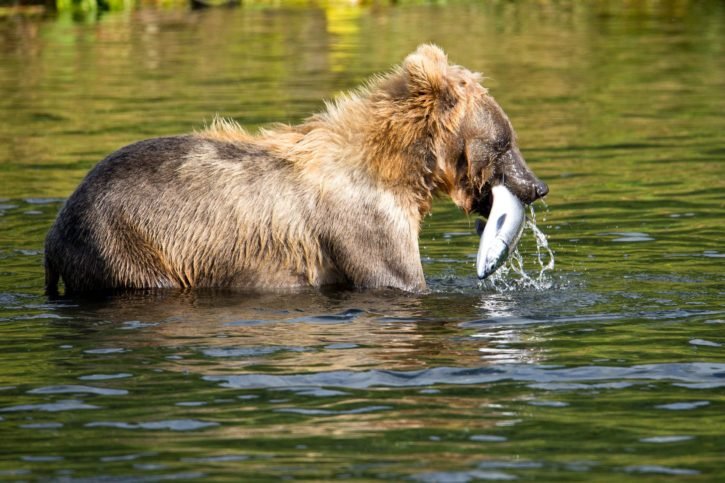The destiny of CRISPR
The European Court returns to show its inadequacy in the scientific field, exacerbating the rules that regulate the use of genetic engineering techniques like CRISPR for the modification of plants of economic interest.

Imagine CC0 Creative Commons - Source
Although the need for regulation in this regard seems legitimate, it is conceptually wrong to associate modified plants through CRISPR to organisms in which it is inserted exogenous DNA. Nevertheless the European Court has promulgated a new regulation that equates the two situations; this will lead to much more stringent rules on the use of engineering technology, limiting again the possibilities of many researchers. So, once again, Europe proves to prefer politics to science and to ride the populisms that so much would like to fight.
The space is closer
The astrophysicist Jonathan McDowell of the University of Cambridge (Massachusetts), argues that the conventional limit that sanctions the end of the atmosphere and the beginning of space must be recalculated.

Imagine CC0 Creative Commons - Source
By convention, it has been established that the altitude at which the atmosphere ends and the space begins, is 100 km. This is obviously an arbitrary limit, as a gas is not trapped by a specific boundary. Studying the orbit of some satellites and their interaction with the atmosphere, McDowell established that this limit could be lowered to about 85 km. A possible revision of this value could be important for the law, also in view of future commercial space missions, the space tourism, which will have to be adequately regulated.
Good news for brown bears
In Europe there are still many areas potentially habitable by brown bears. With adequate human intervention it’s possible to repopulate many uninhabited areas, but is necessary to understand how to avoid conflicts with humans.

Imagine CC0 Creative Commons - Source
Until 500 years ago the brown bear was widespread throughout Europe, but following human intervention on the environment (deforestation and hunting), the number of these animals has dropped dramatically. Today, estimates speak of about 17,000 animals across Europe. If we consider all the territory in which brown bears could live, 37% are not populated, and this offers interesting opportunities for the conservation of the species. A possible reintroduction of bears in some areas must however be accompanied by a careful assessment of the risks for humans
Post of the day
Imagine CC0 Creative Commons - Source
Science is not only made up of numbers and calculations... But there are numerous philosophical discussions that often articulate around it and, in all likelihood, in the long term, they prove to be as important as the formulas. @mountainwashere offers us a reflection on physics, which according to many is one of the purest sciences.

Immagine CC0 Creative Commons, si ringrazia @mrazura per il logo ITASTEM.
CLICK HERE AND VOTE FOR DAVINCI.WITNESS
Keep in mind that for organizational reasons it’s necessary to use “steemstem” and “davinci-times” tags to be voted.
@viki.veg - @spaghettiscience - @rscalabrini
Il destino del CRISPR
La Corte Europea torna a dimostrare la propria inadeguatezza in campo scientifico, inasprendo le norme che regolano l’utilizzo di tecniche di ingegneria genetica come il CRISPR per la modifica di piante di interesse economico.

Imagine CC0 Creative Commons - Source
Anche se appare lecita la necessità di una regolamentazione a riguardo, è concettualmente sbagliato associare piante modificate attraverso il CRISPR a organismi nei quali viene fisicamente inserito del DNA esogeno. La Corte Europea, invece, ha promulgato un nuovo regolamento che, di fatto, equipara le due situazioni; questo condurrà a norme molto più stringenti sull’utilizzo della tecnica di ingegneria, limitando nuovamente le possibilità di molti ricercatori. Ancora una volta, quindi, l’Europa dimostra di preferire la politica alla scienza e di cavalcare i populismi che tanto vorrebbe combattere.
Lo spazio è più vicino
L’astrofisico Jonathan McDowell, dell’Università di Cambridge (Massachusetts) sostiene che il limite convenzionale che sancisce la fine dell’atmosfera e l’inizio dello spazio vada rivalutato.

Imagine CC0 Creative Commons - Source
Per convenzione è stato stabilito, ormai da anni, che la quota a cui l’atmosfera finisce ed inizia lo spazio è di 100 Km. Si tratta ovviamente di un limite arbitrario, in quanto un gas non è delimitato da un confine ben preciso. Studiando l’orbita di alcuni satelliti e la loro interazione con l’atmosfera, McDowell ha stabilito che questo limite potrebbe essere abbassato a circa 85 Km. Una eventuale revisione di questo valore potrebbe essere importante a livello legislativo, anche in vista delle future missioni spaziali di carattere turistico, che dovranno essere adeguatamente regolamentate.
Buone notizie per gli orsi bruni
In Europa esistono ancora molte aree potenzialmente abitabili dagli orsi bruni. Con un’intervento umano adeguato si potrebbero ripopolare molte zone disabitate, ma occorre capire come evitare i conflitti con l’uomo.

Imagine CC0 Creative Commons - Source
Fino a 500 anni fa l’orso bruno era molto diffuso in tutta Europa, ma in seguito all’intervento umano sull’ambiente (deforestazione e caccia), il numero di questi animali è calato drasticamente. Ad oggi le stime parlano di circa 17’000 animali in tutta Europa. Di tutto il territorio in cui gli orsi bruni potrebbero vivere, il 37% non è popolato, e questo offre interessanti opportunità per la conservazione della specie. Un’eventuale reintroduzione degli orsi in alcune zone dovrà però essere accompagnata da un’attenta valutazione dei rischi per l’uomo.
Post del giorno
Imagine CC0 Creative Commons - Source
La scienza non è fatta solo da numeri e calcoli… Al contrario, sono numerose le discussioni filosofiche che spesso si articolano attorno ad essa e, con ogni probabilità, alla lunga si dimostrano importanti tanto quanto le formule. @mountainwashere ci offre una riflessione sulla fisica, quella che secondo molti è una delle più pure tra le scienze.

Immagine CC0 Creative Commons, si ringrazia @mrazura per il logo ITASTEM.
CLICK HERE AND VOTE FOR DAVINCI.WITNESS
Si ricorda che per motivi organizzativi è necessario utilizzare le tag “steemstem” e “davinci-times” per essere votati.
@viki.veg - @spaghettiscience - @rscalabrini
Thanks for including my post! Glad you enjoyed it!
This post has been voted on by the steemstem curation team and voting trail.
There is more to SteemSTEM than just writing posts, check here for some more tips on being a community member. You can also join our discord here to get to know the rest of the community!